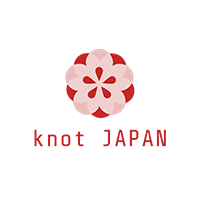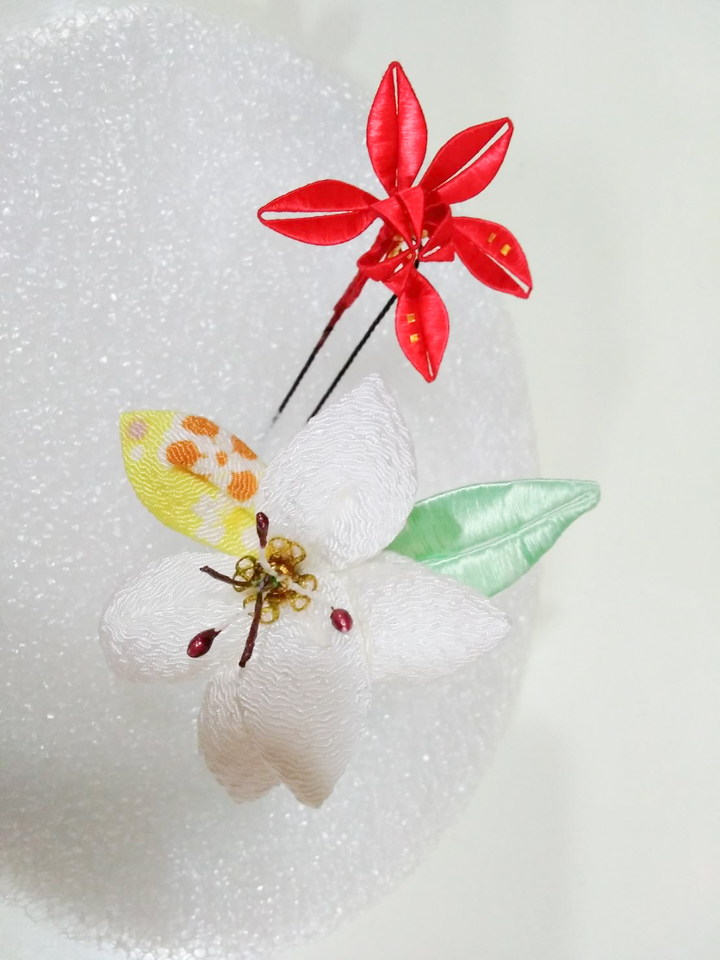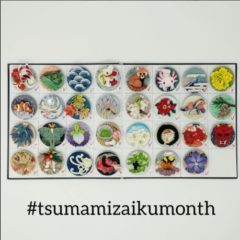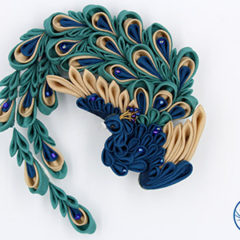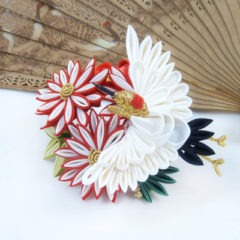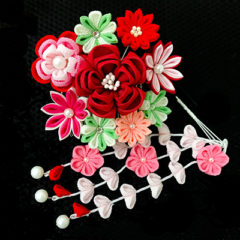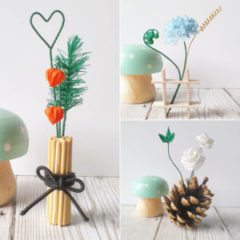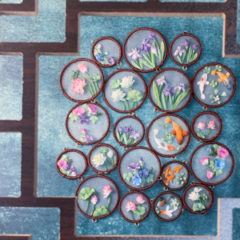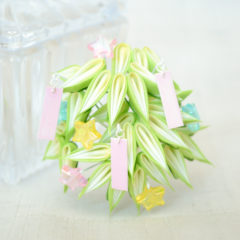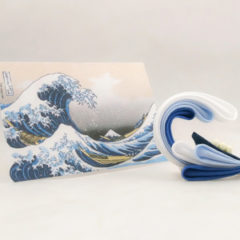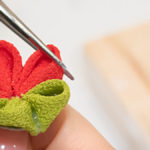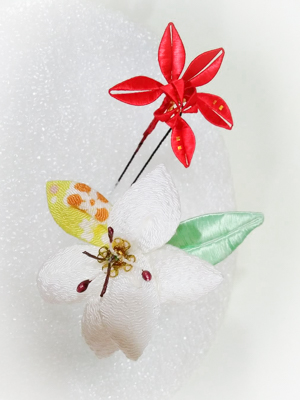
The famous Tsumami-zaiku artists will talk about their thoughts about Tsumami-zaiku.
The sixth Tsumami-zaiku Artist is Taiwanese artist Yating Ting, Liu.
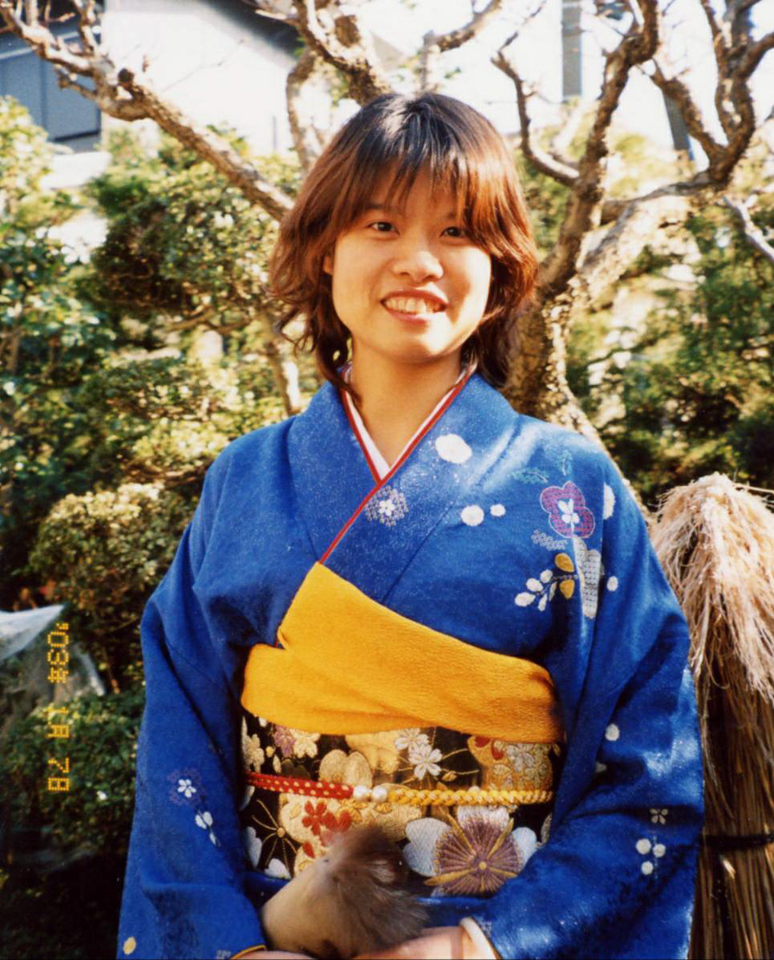
Profile
2001 Entered the University of Tsukuba as a graduate student in the Social Science and Humanities.
2001-2003 M.A. in Humanities and Social Sciences
2004-2006 Returned to Japan for two years as a scholarship student
2006- Back to Taiwan
2007~ Japanese language teacher
2017- Started Japanese traditional dance, learned kitsuke, and started making tsumami-zaiku.
2019.3- Joined Ms. Noriko Kishi`s international tsumami-zaiku workshop inTaipei.
2019.8- Learned traditional tsumami-zaiku from Ms. Noriko Kishi in Japan.
2020.1- Joined Ms. Noriko Kishi`s international tsumami-zaiku workshop in Taipei.
2020.1~ Started teaching traditional tsumami-zaiku in Taiwan. Committed to pass on the beauty of Japanese tradition and traditional tsumami-zaiku technique.
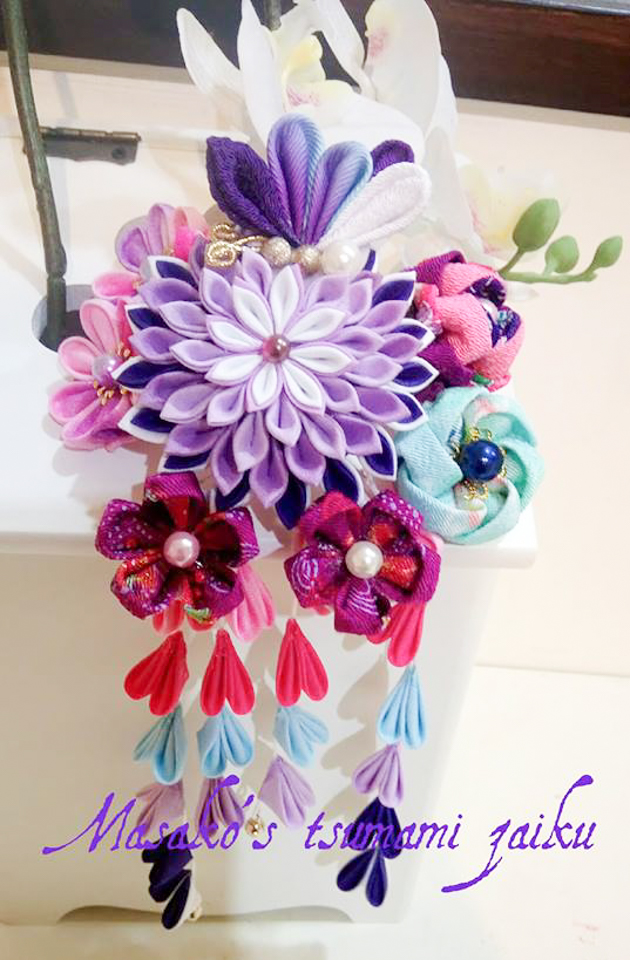
Q1. How did you start working on Tsumami-zaiku? (Or did you get involved?)
I originally loved Japanese culture and was especially fascinated by classical culture (tea ceremony, Japanese dance and kitsuke). I was attracted by tsumami kanzashi that matched the kimono, and was amazed at how delicate and beautiful the hair ornaments were. I was stunned and wish I could make one someday.
One day, I happened to discover how to make tsumami-zaiku on YouTube and started making them. At that time, I did not know the difference of fabrics and techniques but kept on making.
I was fortunate enough to attend a workshop of Ms. Noriko Kishi, held in March 2019 in Taiwan. So I officially began to learn the traditional technique. I was so moved by the innovative and easy-to-adjust method that I made up my mind to go to Japan every summer to study tsumami-zaiku. I became an intern under the supervision of Ms. Kishi Noriko.

Q2. What are your commitments to your work and what do you care about?
The starch gluing method is eco-friendly so I would like to keep this tradition alive. Although I am still inexperienced in the field of tsumami-zaiku, I will do my best to pass on what I learned from my Japanese teacher to the people of Taiwan.
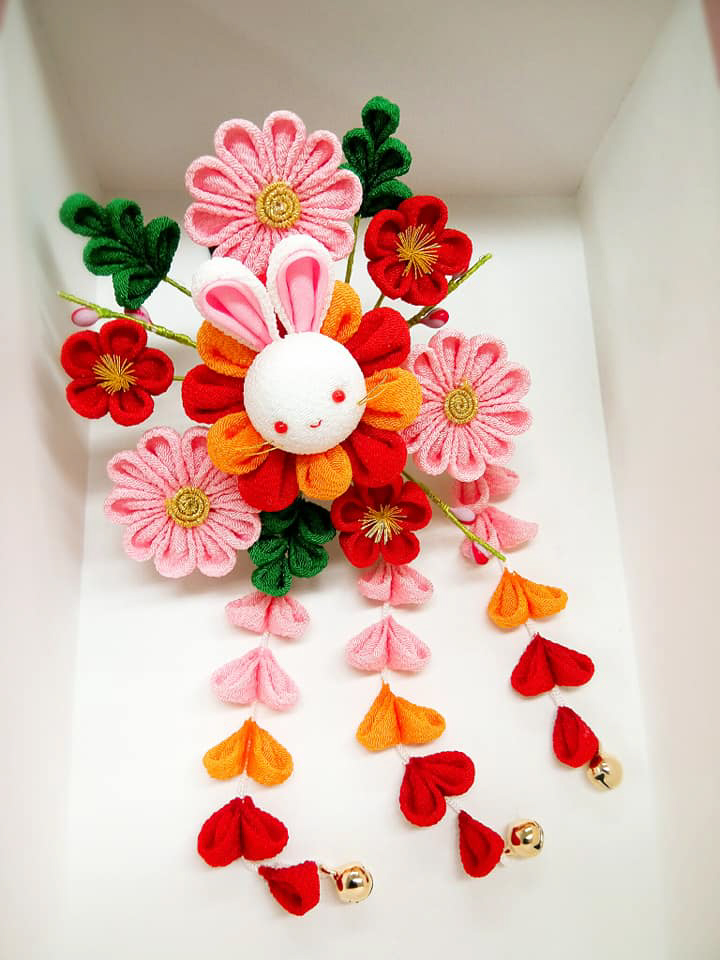
Q3. What is the attractiveness of Tsumami-zaiku for you?
Although there are only two ways to fold the basic tsumami-zaiku, it`s very attractive that various shapes can be created.
Tsumami-zaiku can express various kinds of landscapes according to the four seasons and nature, which I think is an expression of the Japanese sense of beauty. There are only two simple folding techniques, but as I keep on making, my heart will be healed. I think it also has a comforting effect.
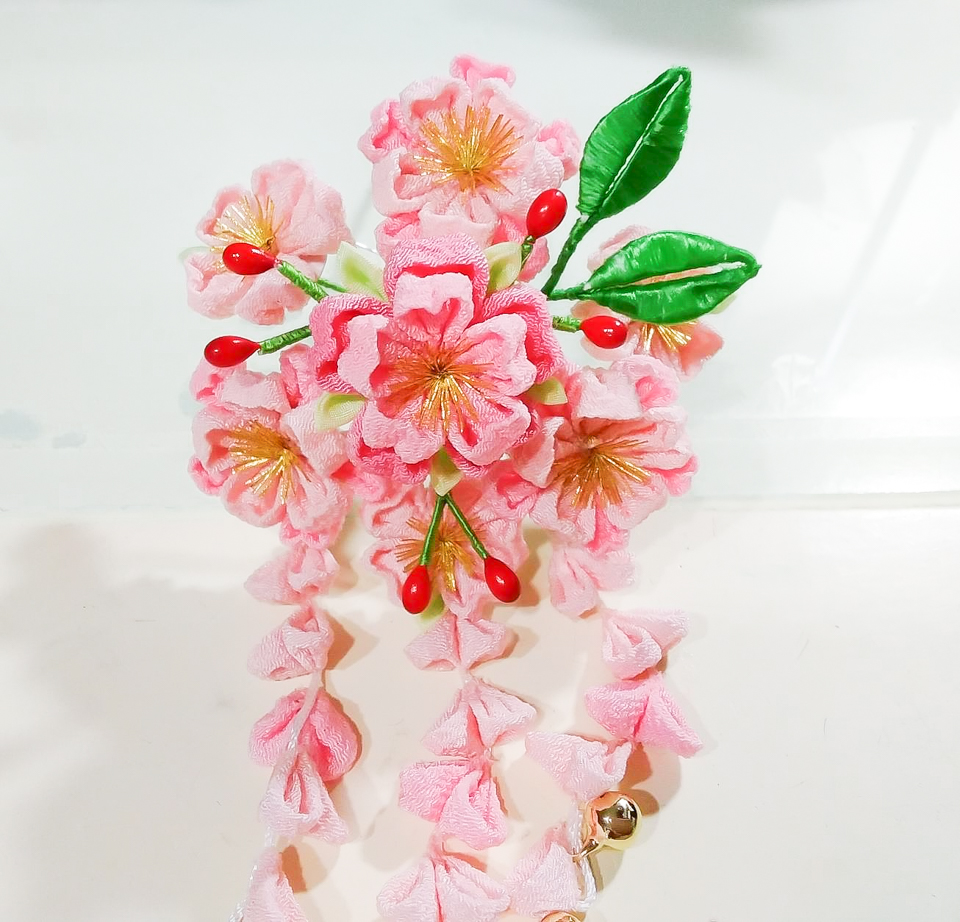
Q4. What do you think about the future possibilities of Tsumami-zaiku?
I believe tsumami-zaiku can be created as something that can be used more widely than just a decoration for Japanese clothing. Especially for people from overseas, if they can accept it as something that fits their own culture, it will last for a long time.
Using multiple different materials, it is possible to design a product that can be used comfortably in modern life.
Q5. What do you want to make in the future?
I would like to make something that includes elements of Taiwanese culture.
For example, in May, there is a festival called “Hsinchu Tung Blossom of Hakka Festival”. The “Aburagiri” flower is a symbol of Hakka culture, and special aburagiri flower was made to be worn by belly dancers.
In Taiwan, there is also a unique culture of “Twined flowers”. It is one of the most delicate art in Taiwan’s culture, it uses thread to wrap around the paper card and wire, compose with variety of hand made leafs. They are used for many kinds of ornaments, wedding tiaras etc. I am hoping to combine this with Japanese traditional craftwork to create a better piece of art.
In the future, I would like to take over the Japanese tradition in Taiwan and make the new development of tsumami-zaiku in Taiwan.
Q6. How do you think you can use/arrange or deploy Tsumami-zaiku in your country?
Although there are some people making tsumami-zaiku in Taiwan, they make it in their own way. They do not learn the traditions that have been passed down from the Edo period in Japan, and there is no tradition to inherit or exchange activities. I have always felt that it is important to nurture people who have mastered traditional tsumami-zaiku in Taiwan. In the future, I will try to set up the tsumami-zaiku association in Taiwan. There should be an association that connects Taiwan and Japan.
I think it is important to promote and educate people who want to learn how to make and pass on their experience to others. I want people to know that anyone can enjoy handicrafts, regardless of age and gender. I strongly hope that more and more people will get to know the art of tsumami-zaiku.
